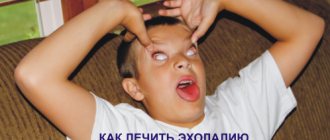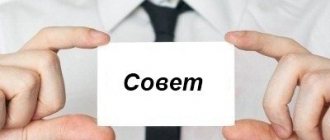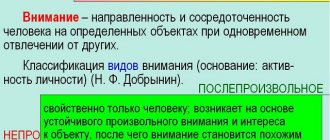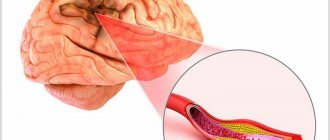Hyperactivity disorder (ADHD) is currently recognized as one of the most common behavioral disorders. As a rule, it is diagnosed in the first years of life, when hyperactivity . Many believe that this disease does not occur after adolescence. In reality, adults face hyperactivity.
Medical research shows that ADHD, even with early treatment, persists in 65% of those diagnosed with the disease. In some cases, psychiatrists and psychologists diagnose hyperactivity in a patient for the first time as an adult. This is often due to an error in the diagnosis earlier. They are often mistakenly attributed to manifestations of depressive disorders or anxiety syndrome. To successfully relieve symptoms, hyperactivity treatment is recommended at a very early age.
What to do if your child has hyperactivity
ADHD is most often diagnosed in childhood. Most often, parents of restless babies or teaching staff of children's educational institutions turn to specialists. The child understands others well. He hears and fulfills the requests of adults, but is too impulsive to accurately carry out the instructions received.
Adults often try to justify all the child’s pranks with this diagnosis. In reality, it is confirmed in no more than 3-5% of babies. Most of them are boys. The course of the disease differs:
- boys show a tendency to aggression and are characterized by hypertrophied disobedience;
- girls suffer from inattention, which can lead to learning problems.
In a third of children, ADHD goes away on its own during adolescence, without the use of specialized medical practices and medications.
Parents hold two polar points of view on the treatment of ADHD. About half consider the possibility of such a pathology to be far-fetched and refuse therapy, believing that the disorder will go away on its own with age. On the contrary, many parents exaggerate the danger of this disease for the development of the child. Hyperactivity requires mandatory monitoring by doctors and appropriate adjustment; in most cases, the pathology is successfully cured. Parents need:
- undergo a comprehensive examination to accurately establish a diagnosis;
- follow the specialist’s recommendations to create the most comfortable conditions for the child, carefully monitor the baby’s condition;
- fulfill all requirements, go through all necessary procedures;
- attend a consultation with a family psychologist.
A child with ADHD is characterized by an increased level of emotionality. He needs to be praised often, increasing self-esteem and self-confidence. In games, it is recommended to exclude competitive aspects that can lead to negative effects on the psyche. It is imperative to set boundaries for the child’s behavior. For example, give simple and executable instructions (take out the trash, wash your cup after yourself and other small tasks). The baby should grow up in the most favorable conditions, but clearly understand the boundaries of behavior so as not to become overly spoiled.
It is advisable to carry out diagnostics in a specialized medical center. Only in such a situation can a neurological disorder be confirmed, excluding simple increased activity or poor upbringing. A preliminary assessment of the condition can be carried out at a local clinic.
He can't sit still for a minute
An easily excited, restless, unbalanced child... For several years, problems with such children have been the subject of surveys and passionate discussions.
As a result, nowadays a tendency has developed (in our opinion, somewhat hasty) to consider such behavior pathological, although mild excitability does not always indicate an existing pathology. Of course, there are behavior problems that occur with a certain frequency, are repeated, and they do require contact with a specialist, but only when the instability is significant, uncontrollable, accompanied by aggression and lasts for a long time.
Most often, we are talking about a response to events around us: maybe the child reacts in a similar way to some problems in the family? And sometimes this is how hidden depression manifests itself: in children it is often expressed precisely in increased mobility - the baby needs movement in order to fight the sadness inside.
Excessive mobility coupled with slight excitability can also simply be a character trait: some children are more restless than others.
What aspects need to be taken into account?
If a child seems to you to be overly active, at some moments he demonstrates this especially clearly - for example, in the yard where a group is walking - but this does not affect anything, including the learning process, you don’t have to worry too much.
Children who manage to control themselves during activities may be more restless and agitated at home.
– A very small child needs to move. Remember, when addressing your baby, that the episodes when you demand attention from him should be short - their duration always depends on the baby’s age.
– When working with your child, alternate the types of his activity : after a period of physical activity, when the child, having moved well, uses up energy, there should be a more “quiet” period, allowing the baby to concentrate.
– Be attentive to the quality of your child’s sleep : no tired child can sit still, fatigue leads to mild excitability.
– Isn’t your baby’s excessive mobility a reflection of life in the family? If this is the case, think about ways to make the family atmosphere more relaxed. Of course, this is not easy, because the child himself provokes stress in adults with his behavior, however, this is where one of the main problems of excitability and mental instability lies: they intensify due to the reaction that they cause in others - therefore, here it is possible talk about something like a self-exciting system.
You feel as if the child is “angry” on purpose - so that you attack him
Yes, “freaking out” is one of the ways for a child to attract your attention when it seems to him that you are moving away and becoming less available to him.
– The main thing in such cases is not to punish! First of all, you need to try to figure out what caused this child’s behavior.
– Think about what in your parenting method can be softened or changed, diversified.
- Find time for your child, try to decipher what signals he is sending you, formulate his requests clearly, unambiguously, calmly and - showing that you are aware of their significance.
– Offer your child calm activities, choosing those that are interesting to him. Child psychiatrist Stanley Greenspan* called this type of activity with children “floor time,” because no one - neither parents nor teachers - hesitates to sit next to the baby on the ground and do something important for him there.
– Arrange “dates” with your child, not necessarily very long ones, but ones when you are actually completely at his disposal. Such a response to the uncontrollability of a son or daughter will help them bring overexcitation, which was solely intended to attract the attention of the mother, into the mainstream of a normal need for you.
However, all this is not always enough to help an overly excitable child.
– The child really suffers - just like you , even if it seems to you that this is not so, even if it seems as if he is responsible for everything. In fact, most often he is a prisoner of his own behavior.
- It is useless, even harmful, to multiply punishments : in the end the baby will hate you or begin to avoid you, afraid to be alone with you. You need to consult a specialist and they will help you.
– In any case, the consultation will be a stage that will allow you to get out of the vicious circle in which you and your child find yourself.
* Stanley Greenspan (1941-2010) - an outstanding child psychiatrist, one of the world's leading specialists in the correction of childhood emotional disorders. His book “The Tyrant Child. An approach to children of five “difficult” types.”
Treatment of hyperactivity in children
In medical practice, several options are used to treat hyperactivity in children. First of all, a thorough examination of the small patient is carried out. One of the main goals is to exclude potential pathology.
Further, experts prefer to prescribe non-drug courses. Psychological, pedagogical and psychological methods are used in the work. Participation in the treatment process of the whole family becomes an important condition. For this purpose, specialized family practices are used. This will allow you to establish contact with a child suffering from hyperactivity and develop a treatment program.
In acute situations and in the absence of effect in treatment using psychological classes and trainings, the following medications are selected:
- depressants are prescribed, Amitriptyline, Methylphenidate;
- Focalin, Vyvanse, Methylin contribute to increasing the level of concentration;
- glycine helps improve brain function;
- nootropic drugs Phenibut, Pantogam and others.
All of these medications are used simultaneously in the treatment of a child in exceptional cases. An individual therapy program is developed for each little patient.
Causes
There are many assumptions about what exactly can provoke the development of hyperactivity syndrome in children, but not a single neurologist will be able to accurately name a complete list of them and trace a clear connection between any events and factors with the manifestation of hyperactivity. Today it is believed that it develops against the background of a combination of a complex of various disorders and external influences. Therefore, biological, genetic and psychosocial factors are identified, the presence of which contributes to the occurrence of hyperactivity and/or attention disorder.
Conducted studies confirm that the effect of a hereditary factor is found in 50% of children with this diagnosis. As for biological disorders, the main causes of the development of ADHD are considered to be cerebral-organic changes, that is, those that are accompanied by disturbances in the functioning of the nervous system, namely:
- premature or complicated birth, which affected the development of the nervous system or caused hypoxia (oxygen starvation);
- occupational hazards that a woman encountered during pregnancy, as well as smoking, drinking alcohol, and a number of medications;
- intrauterine infections;
- a pregnant woman experiencing stress or frequent physical fatigue;
- far from healthy diet during pregnancy;
- premature birth or “post-term” pregnancy;
- birth of a child before 20 years of age or after 40 years of age;
- metabolic disorders, especially those that tend to be inherited.
It is believed that a deficiency of high-quality protein foods, vitamins and minerals in the daily diet against the background of an excess of simple carbohydrates, especially consumed in large quantities in the morning (bread, rolls, sweets), creates favorable conditions for the occurrence of ADHD.
Psychosocial factors play an important role in the development of the disease, among which the most significant are considered to be:
- alcoholism and serious disagreements between parents;
- violence in family;
- the child's experience of psychological trauma;
- low social status of the family, lack of means of subsistence, which can be aggravated by ridicule from peers.
Inflated demands of parents on them, constant dissatisfaction with achievements, etc. contribute to the development of hyperactivity in children.
Hyperactivity syndrome in children
It is possible to assume that a child has such a diagnosis at a very early age. Already in the first months the child sleeps poorly. He has an excessively violent reaction to noise and bright light. He reacts violently to hygiene procedures and gets overexcited during the simplest games. There is a slight lag behind the norm in psychomotor skills.
The presence of the disease can be determined at the age of three years. Psychologists mark this age as the first turning point. All kids become capricious and demanding. Children with hyperactivity have a delay in speech development, movements are fussy and chaotic.
The syndrome is accompanied by physiological disorders. The baby often experiences headaches, increased fatigue, and is diagnosed with enuresis and nervous tics.
In the preschool years, children with the syndrome are slower than their peers to learn new material, which is explained by their insufficient ability to concentrate. This situation continues after entering school. The lag in the assimilation of knowledge is caused not by low mental abilities, but by the lack of the ability to concentrate attention and fully remember all the new material.
Emerging problems provoke increased sensitivity and aggressiveness in the child. He becomes anxious and whiny, and phobias develop. As a child with ADHD grows up, self-esteem decreases and complexes arise. Without treatment, they can last a lifetime.
How does hyperactivity syndrome manifest?
The disease can first appear at any age, starting in infancy. It may be accompanied by:
- anxiety;
- restlessness;
- irritability, tearfulness;
- sleep disorders;
- decreased level of attention, constant distractibility;
- impulsiveness;
- stubbornness;
- delayed speech development.
For each age, separate standards have been developed, non-compliance with which makes one think about the occurrence of disturbances in the functioning of the nervous system. For example, very quickly switching to other surrounding objects, voicing random thoughts and memories is called distractibility, which is one of the most striking signs of attention deficit.
Another term often heard when diagnosing ADHD is “impulsivity.” This means that when a child receives a task, he does not listen to the end of the recommendation or instruction and begins to complete it prematurely. As a result, he usually underestimates the complexity of the task or handles it incorrectly because he ignored the requirements. At the same time, impulsive children are not able to think about the consequences of their actions, so they often get injured, become victims of accidents of varying severity and find themselves in unpleasant situations.
Hyperactivity or not
As already mentioned, very often healthy children's activity and spontaneity are confused with such a disorder of the functioning of the nervous system as attention deficit hyperactivity disorder. Parents may suspect the presence of ADHD by the presence of the following signs:
- the child is much more active than his peers (sometimes parents say that he is “running on the ceiling”);
- increased excitability, which is manifested by the presence of unnecessary movements (the child constantly twirls, dangles his legs, swings on a chair, plays with his hands, etc.) or speech incontinence (the child talks without stopping);
- absent-mindedness - with ADHD, children constantly lose and forget personal belongings, do not listen to instructions received from adults, even short ones, and are distracted;
- rapid onset of fatigue when it is necessary to complete tasks that require perseverance and concentration on the process - parents of schoolchildren are sometimes forced to constantly sit next to the child while doing homework and control them;
- increased emotionality, manifested by absolute incontinence and splashing out any emotions on others;
- the inability to bring the work started to its logical conclusion - the child loses interest in the activity and quickly moves on to another type of activity;
- lack of self-control, manifested by constant interruption of other people, difficulties when it is necessary to wait for one’s turn or where, a tendency to quarrels and fights;
- lack of coordination, as a result of which the child can often be injured.
Signs of ADHD always appear before the age of 7, but they most often begin to attract attention in the late preschool and school periods of a child’s life.
In addition, with ADHD in children over 4 years of age, parents may lose control over their behavior. Such children often not only do not listen to adults, but are incapable of negotiating and seeking compromise and generally following established rules. But such “symptoms” can appear together or separately in healthy children during a difficult psychological period, experiencing a crisis of 3, 6-7 years, etc. Therefore, parents should sound the alarm only if the child has several of the above-described violations, moreover, for longer than six months, and they prevent him from adapting to society.
Hyperactivity is a permanent condition. Therefore, children with this syndrome behave the same everywhere: at home, in kindergarten, at school, on a walk.
Diagnosis of hyperactivity
Children suspected of having ADHD are under the constant supervision of their attending pediatrician. In this case, a neurological diagnosis is not established earlier than 5-7 years. This is due to the developmental characteristics of preschool children. Child psychologists try to diagnose only after the completion of the transitional age crises of 3 and 7 years.
Diagnosis is carried out by a child psychologist together with a neurologist and pediatrician. Consultation with several specialists makes it possible to exclude other diagnoses that lead to increased activity and excitability. Also, during diagnosis, doctors reassure parents that their baby’s increased excitability, restlessness, is only a manifestation of character.
The baby’s condition is monitored from the first weeks of life. If hyperactivity is suspected, the doctor conducts a thorough analysis of the child’s behavior in everyday life.
Diagnostics includes three stages:
- a conversation between a child psychologist and the child’s parents;
- researching;
- obtaining advice from the pediatrician treating the baby.
To confirm the diagnosis in a hospital setting, EEG, REG, M-Echo, MRI are performed. Before conducting research, it is recommended to keep your child busy with an interesting game. You can give a mild sedative.
Recommendations for parents
If your child has persistent signs of hyperactivity, you should definitely consult a neurologist and psychologist. Specialists will diagnose the physical and mental development of the baby, based on the results of which they will draw up an individual treatment plan and behavior correction. The environment in which an active and hyperactive child usually finds itself greatly influences his behavior, so it is important for parents to adhere to the following principles:
- Create a calm environment at home;
- Do not punish or scold your child for “bad” behavior;
- Follow a daily routine;
- Nutrition should be balanced;
- Give your child the opportunity to splash out accumulated energy (sports, active games while walking);
- Limit your child from watching TV and using gadgets;
- Spend more time outdoors;
- Avoid noisy places and large crowds of people;
- Introduce quiet games and creative activities;
- Give your child specific requests and instructions;
- Teach your child self-organization skills. To do this, you can use various visual materials or reminders (for example, schematic images of actions that a child should perform before bed: brush teeth, wash, put on pajamas, go to bed).
Hyperactive children often face negative attitudes from people who do not understand the functioning of the nervous system and child psychology. That is why such children need special support and acceptance from loved ones.
Symptoms of hyperactivity
Doctors recommend conducting studies to confirm the diagnosis at the age of 5-12 years. The child has already gone through the first transitional periods and his character has been formed. But the first signs of this neurological disease appear much earlier. Parents are advised to pay attention to:
- the baby begins to hold his head up, crawl, walk, and sit earlier than his peers;
- sleeps less than normal and has difficulty falling asleep;
- They are highly sensitive to sharp sounds, bright light and other unexpected factors.
Children with ADHD often experience autonomic disturbances. There may be frequent stomach upsets and diarrhea. Allergic reactions often occur.
Among the neurological symptoms, the main one is impaired concentration. The baby has difficulty concentrating on one activity or subject. He avoids cyclical affairs. A child can become attentive only during one-on-one lessons with a teacher. Movements are chaotic. The baby's facial expressions are expressive. He speaks quickly, often slurring his words and jumping from one topic to another. The baby is impulsive and, when choosing a course of action, is guided only by his own desires. Indicative symptoms include frequent mood swings and a tendency to take risks.
All manifestations are associated with the vulnerability of the nervous system of a child with ADHD, which finds it difficult to process a large amount of information coming from the outside world.
Additional symptoms include:
- impaired communication with peers;
- the occurrence of problems in learning with a normal level of intelligence;
- delay in emotional development;
- low self-esteem that develops at an early age.
Hyperactivity also has its positive sides. Children are active, they are mobile and active. They perfectly “read” the mood of the interlocutor and for the sake of people
conclusions
Many children of preschool and primary school age look too active in the eyes of adults. They are constantly on the move, love active games, and cannot sit still. And this is normal, because an active baby is a healthy child. But some children do not become calmer even in an unfamiliar environment; their activity is intrusive, it prevents them from learning information and adapting to a peer group. The nervous system of hyperactive children is too excitable and has difficulty coping with a large number of stimuli, resulting in inattention, impulsiveness, and an inability to control behavior. To help a hyperactive child cope with difficulties, you need to develop a special educational approach to the child, accept him as he is, and not scold him for “bad” behavior. A favorable home environment, daily routine, sports, special games and other important things are what parents can use for the benefit of their baby.
Causes of hyperactivity
Among the causes of the violation:
- unfavorable course of the mother's pregnancy, including smoking and drinking alcohol during pregnancy;
- neurological disorders during intrauterine development, for example, fetal hypoxia, asphyxia at the time of birth, premature birth;
- the influence of the family atmosphere on the development of the child in the first months of life, frequent scandals of parents, malnutrition and other unfavorable factors.
The likelihood of hyperexcitability increases as the number of these factors that appear together increases.
Grodno Regional Children's Clinical Hospital
Details Published December 18, 2019
What is the essence of the problem?
Hyperexcitability syndrome in childhood can be a consequence of damage to the central nervous system and occurs in 10% of preschool children. The main distinguishing feature of the syndrome is that children are extremely active, have an increased level of anxiety, and are emotionally unstable. Infants may experience frequent regurgitation and sleep disturbances, trembling of the chin and limbs.
At its core, this syndrome is a consequence of damage to the child’s nervous system during the period of intrauterine development, childbirth and the first days of life. Medical specialists from the CIS countries attribute this syndrome to a pathological process, while foreign colleagues believe that this is a borderline condition that does not require any correction. However, medicine shows that the lack of timely medical and pedagogical intervention often leads to persistent neurotic conditions in the future.
Possible causes of hyperexcitability syndrome in children.
There are a number of reasons that can lead to hyperexcitability syndrome:
Problems associated with the course of pregnancy (toxicosis, gestosis, infectious diseases of the mother during gestation or in the first days of the baby’s life).
Problems associated with the period of childbirth (birth traumatic brain injury, rapid or, conversely, prolonged labor, which can lead to oxygen starvation in brain cells and, as a result, their damage).
Lifestyle related problems. Perhaps the mother smoked, used drugs, alcoholic beverages or illicit medications, or violated their dosage.
In addition, hyperexcitability of newborns can also appear against the background of constant stress in the mother, since the child’s nervous system is formed much earlier than he is born.
What are the manifestations of the syndrome?
Parents complain that their child has constant mood swings. Outbursts of anger appear in completely unexpected situations, and most often the bad mood is taken out on the parents. Anger suddenly gives way to joy and laughter is heard. And if parents can get used to such changes, then problems often arise at school and kindergarten.
Such children often strive to become leaders in any situation, however, most of their peers do not accept the terms of the game, which leads to conflicts and increases neuroticism. Neuroticism manifests itself in a tendency to worry out of nowhere and increased fatigue. Sleep disturbances may occur. Obsessive actions may appear in the form of nail biting, picking your nose with your fingers.
Another unpleasant sign of hyperexcitability syndrome is a lack of distance when communicating with strangers. From the outside it may seem that the child is sociable and sociable, but the modern world is quite dangerous, and contact with a stranger can lead to irreparable consequences for the child himself.
Teaching children at school.
Hyperexcitability syndrome often causes poor grades in school. The child’s attention is constantly switching, so it is quite difficult to focus throughout the entire lesson on what the teacher is telling the child.
Errors in text and tasks are most often made due to inattention. Simply put, self-organization skills suffer. The teacher may think that the child is doing everything out of spite. Such children usually have clumsy handwriting and make a lot of corrections in their notebooks.
Treatment and prevention of hyperexcitability syndrome.
It should be understood that a child’s hyperexcitability is not a death sentence. Parents need to understand that medications in this case are just an auxiliary method of treatment. They can only calm the baby slightly, and the parents themselves will have to be patient.
Behavioral therapy will be required so that the child can adapt as much as possible in society and study normally at school. Family consultations with a psychotherapist or psychologist may be required.
In the first years of life, therapeutic measures are aimed at eliminating the consequences of perinatal damage to the central nervous system. In case of severe anxiety or sleep disturbances, swimming and baths with the addition of aromatic salts or pine needles are recommended. Massage sessions, exercise therapy and physiotherapy help a lot.
In addition to all of the above, parents are obliged to do everything to make the child comfortable in his own family.
The main thing is not to ignore the problem, but to be ready to solve it.
Neurologist (Head of the 1st Neurological Department) of the Healthcare Institution "GODKB" Domarenko T.N.
Diagnosis of hyperactivity
Such a diagnosis can only be made by a specialist after conducting a series of studies. In recent years, this neurological disorder has been identified as a separate pathology. The diagnosis is officially accepted in international medical practice.
Confirmation of the diagnosis indicates the presence of a chronic neurological disorder. Without the necessary treatment, it can last a lifetime. Without therapy, the disease develops in three directions:
- the child stops believing in himself and withdraws;
- he may experience serious mental disorders, he will begin to live in an imaginary world;
- cope with the pathology on their own, but with great difficulties.
Timely initiation of therapy will help correct the course of the pathology and make the prognosis favorable.
Correction of hyperactivity
It is important for parents to monitor their baby’s development from the first days of life. Especially in the case of the presence of negative factors that accompanied the bearing of a child and its birth.
A careful attitude towards the baby in the family will help eliminate ADHD. The home should have a calm and favorable environment. Parents are not recommended to raise their voice to the child or be overly demanding of him.
It is important to form adequate self-esteem in a child from a very early age, praising small actions successfully performed and calmly paying attention to possible mistakes made. They are inevitable, but you should not put too much emphasis on them, causing the child to feel guilty. The support of elders in all endeavors is important for a child. He should have a calm daily routine with the obligatory presence of daily walks with active games, the formation of habits in the field of proper nutrition helps in controlling hyperactivity.
Such careful attitude is required for any child, but the implementation of such corrective rules is mandatory in families with a hyperactive child. It is important for parents to regularly consult a doctor for behavioral diagnosis. In case of acute conditions, the doctor prescribes a set of corrective medications. Only specialists can prescribe any medications. Independent therapy in choosing a course of treatment is prohibited.
Why is this a problem
Adults usually do not pay attention to the child’s behavior, believing that he will “outgrow” with age. And they turn to a doctor only when the problem simply cannot be ignored.
In kindergarten, the problem is just beginning to develop. But when the child goes to school, the signs begin to be expressed more clearly. The educational process requires organization of classes, that is, this is exactly what the baby is not prepared for. Poor concentration, active mobility and inappropriate behavior in class make a full-fledged educational process impossible.
Children with increased activity constantly need the supervision of a teacher, since it is very difficult to focus the child’s attention on the educational process, he is constantly engaged in extraneous matters, is distracted, and lacks attention. The teacher's patience and experience are often not enough to correct destructive behavior. A reverse reaction begins to form—aggression.
The development of such children lags behind their classmates. Teachers cannot adapt to the developing pathology, this leads to conflicts. A hyperactive child at school is often subject to bullying by peers, and he develops problems with communication. They don’t want to be friends with him; this causes resentment, attacks of assault, and aggression.
The tendency to lead due to the impossibility of being one begins to give rise to the development of low self-esteem. After a certain time, isolation develops. Psychological problems appear more pronounced.
Many parents are frightened by this diagnosis. They may believe that their child is developmentally delayed. This is a wrong opinion, because in fact a hyperactive baby:
- Creative. He has many interesting ideas, and his imagination is very rich. If mom and dad help the child, in the future he will be able to become a wonderful specialist with a creative approach to business or a representative of a creative profession with multifaceted interests.
- He has a flexible mind, is distinguished by enthusiasm and the ability to find solutions to complex problems. He is versatile, has many interests, and strives to be the center of attention.
- Energetic and unpredictable. This property can be both beneficial and negative. The baby has a lot of strength for different activities, but it can be almost impossible to keep him in place.
There is an opinion that a hyperactive baby is always on the move and moves chaotically. This is not entirely true. If any activity absorbs all the attention of a preschooler, he may forget about everything else. It is important for parents to encourage hobbies by allowing them to choose what to do.
The symptoms of hyperactivity in a child and his intellectual abilities are in no way connected. Very often these guys are very talented. In addition to treatment, they need to be educated, kept within clear boundaries, trying to develop their natural abilities. They often dance, sing, and perform in public wonderfully.
Hyperactivity in adults
For a long time, ADHD was considered a disease that occurs only in young patients and goes away as they grow older towards adolescence. Research in recent years has confirmed that hyperactivity can occur at any age. As a rule, diagnosis in adults is associated with an error in determining the causes of hyperactive behavior in early years. This caused errors in treatment. Sometimes the disease was simply not diagnosed.
Adult patients experience symptoms similar to those of the disease in childhood. Due to adaptation, most adult patients are characterized by increased excitability and hyperactivity. This leads to symptoms:
- difficulties when working according to instructions;
- patients are unable to maintain attention when performing monotonous and tedious actions;
- have weak organizational abilities;
- execute several processes simultaneously without completing the action;
- are forgetful when performing daily duties, may forget objects and goals;
- unable to control the volume of the voice or remain patient, for example, when standing in line;
- interrupting the interlocutors' statements;
- swiftness and variability of behavior;
- increased irritability.
Experts note other factors as well. A positive feature of ADHD in adult patients is high performance. They often successfully build a career, reaching significant career heights. The disadvantages include the occurrence of problems in interpersonal communication, which often interfere with maintaining a high quality of life. Including destructive interpersonal connections with low adaptation. Treatment for hyperactivity can begin at any age. Patients are prescribed corrective medications and undergo individual and collective psychological training.
Features of treatment
There is no magic pill for attention deficit disorder. For children and school-age children, treatment for hyperactivity is always prescribed in a complex manner.
With the right choice of medication, treatment results are achieved in 95% of cases. But you will have to undergo treatment for more than one year; drug adjustments will probably be necessary at an older age.
Drug therapy involves the use of sedatives, drugs that stimulate psychological development, and also improve metabolism in the brain. For this, sleeping pills, tranquilizers, nootropics and psychostimulants are most often prescribed. In certain situations, antipsychotics and antidepressants are prescribed.
But you should not attach primary importance to drug treatment, since it only relieves symptoms and does not get rid of the cause. Also, it cannot replace the most important thing - love for the child. It is she who can cure him and subsequently give him a full life.
The most relevant recommendations for correction:
- It is not advisable for children with hyperactivity to engage in sports where competitions are held. Aerobic exercise, cycling, swimming, and skiing are acceptable.
- Communication with a psychologist. A professional will select a system to reduce anxiety and increase sociability of a young patient. Conversations will help improve self-esteem, develop speech, memory and attention. If there are serious speech disorders, classes will be held with the participation of a speech therapist.
- A visit to a psychotherapist with the whole family will help cope with the condition much faster.
- Correcting the actions of all family members, getting rid of unhealthy habits of parents, normalizing the daily routine. It is also necessary to identify possible irritating factors and reduce them as much as possible or completely eliminate them. It should be understood that a tense relationship between father and mother has a detrimental effect on the development of their children.
- Drug treatment. Doctors most often prescribe nootropic drugs and sedatives with herbal composition. However, you should treat your baby with pills only if other methods have proven ineffective. Nootropics are used to improve blood circulation in the brain and normalize metabolic processes. Taking these medications will help improve memory and attention. The course of treatment can last for a long time, since the medications have an effect no earlier than after 4-6 months.
If necessary, you can ask your doctor to recommend soothing herbs that you can drink in pure form or add to tea.
Most adults note an improvement in their children's well-being while following a gluten-free diet. Some people also benefit from eliminating starch and sucrose from their daily menu. For children with high activity, all foods that are required for brain tissue are useful: lots of legumes, nuts, protein, fruits, vegetables, olive oil, fatty fish.
You need to exclude snacks and sweets with dyes, flavor enhancers, and preservatives. Experts recommend that parents select foods to which their children do not have a personal intolerance. Why should you rotate foods and make a food diary? You should take turns removing one product from the daily menu and monitoring the child’s condition.
Hyperactivity in schoolchildren
During school years, ADHD causes problems with mastering the educational program. A low level of ability to maintain attention during lessons and a lack of willingness to concentrate while doing homework causes a significant decline in academic performance. Lack of control on the part of doctors leads to increased anxiety.
Schoolchildren suffering from hyperactivity fall into the category of unsuccessful students, despite the ideal state of intellectual abilities. The child becomes nervous and hot-tempered. His self-esteem decreases.
Manifestation of hyperactivity
People with this neurological disorder tend to:
- inability to concentrate on performing monotonous routine actions;
- a patient with ADHD is unable to concentrate while maintaining a conversation;
- he can be irritable and moody, prone to mood swings;
- Such people are characterized by impulsiveness and a tendency to take risks.
Diagnostics are necessary to identify pathology. Often these symptoms can accompany a certain eccentricity of a person who does not have neurological pathologies. They also accompany some complex psychiatric disorders.
An examination is recommended for an accurate diagnosis. This will allow us to develop an effective option for complex therapy that provides comprehensive and qualified care. Treatment of hyperactivity is carried out on an outpatient basis. In most cases, psychological therapy is carried out without the use of drugs or the use of drugs in minimal dosages.
Hyperactivity in preschool children
ADHD in children who have not yet reached school age has certain characteristics. Hyperactivity in patients is observed from a very early age, which indicates an innate predisposition to potential disorders. However, doctors do not recommend making a diagnosis confirming a neurological disorder before the age of 5-12 years.
This is due to the peculiarities of the formation of the psyche of a small child. Many children are characterized by increased emotionality, which does not indicate the presence of pathology. Additionally, behavior is affected by the first crises of adolescence, which a person experiences with varying degrees of severity during the period of approximately three and seven years. At this time, every child becomes capricious and begins to attract the attention of adults, becoming either too passive or hyperexcitable.
In preschool age, parents or teachers can only pay attention to a certain predisposition of the child to the future development of pathology. If symptoms persist for months and years, parents should carefully monitor the child’s behavior, pay attention to his communication with peers, and educational progress. Confirmation of the diagnosis is carried out only after a minimum of five years of age.
Hyperactivity syndrome is a pathology that, without proper treatment, can significantly worsen the patient’s quality of life at any age. This neurological diagnosis will be monitored by experienced specialists. The help of doctors and relatives ensures proper adjustment of the behavior of people suffering from ADHD.
What is the difference between activity and hyperactivity?
A healthy preschool child is an active child. He loves to run, jump, play outdoor games, sing and dance, asks a lot of questions about everything in the world, throws toys around, and so on. How to distinguish a high level of activity from hyperactivity and overexcitability? An active child does not behave this way always and not everywhere. If the baby is interested in something (for example, a book or a game), he can calmly go about his business. In the presence of unfamiliar people or in a new environment, the child is usually not as restless as at home. Excessive activity can also be a consequence of stress, fatigue or boredom, as well as a desire to attract attention, so when the stimulus disappears, the level of activity soon returns to normal.
A hyperactive child, on the contrary, behaves equally actively in all situations: at home, in kindergarten, at a party, and even at a doctor’s appointment. Moreover, obsessive mobility does not have any purpose. Persuasion, requests, punishments and other educational measures do not work on a hyperactive child, since a hyperactive child simply cannot control his behavior.
Hyperactivity is often considered solely as a characteristic of a child’s behavior, but one must understand that external manifestations are a consequence of overexcitation of the baby’s nervous system. Only a doctor can diagnose ADHD.











